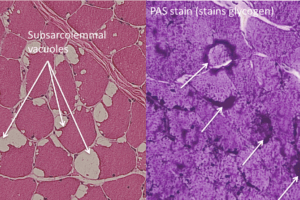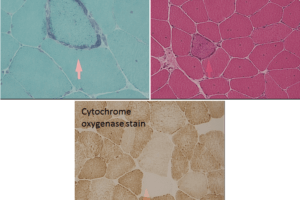Reflex sympathetic dystrophy (RSD), complex regional pain syndrome (CRPS) is a syndrome of disproportionate amount of pain, abnormal function of the sympathetic nervous system, swelling, movement disorder, dystrophy and atrophy that follows an injury.
Clinical presentation of reflex sympathetic dystrophy
In a small group of patients who experience trauma, movement disorder may develop even after the resolution of pain. Reflex sympathetic dystrophy is a constellation of symptoms that exceed the magnitude and duration of a normal healing process expected after the initial injury. RSD can be ruled out if there is clear pathology that would explain symptoms.
The most common and profound symptoms of reflex sympathetic dystrophy are pain and problems with mobility out of proportion to recognizable tissue damage. The pain is usually constant, severe, burning, or deep aching pain. Light touch can be painful (allodynia). Repetitive tactile stimulation can cause increasing pain with each tap, and there can be an extended after-sensation of pain (hyperpathia). There is often diffuse tenderness in the muscles of the affected region thought to be caused by small muscle spasms called muscle trigger points (myofascial pain syndrome). There can also be paroxysmal dysesthesias and lancinating pains.
Physical findings in reflex sympathetic dystrophy
Patients with reflex sympathetic dystrophy often have brittle nails, skin that is shiny, dry, or scaly, and hair that grows coarse and thin. Nails also grow faster, and faster growing nails can be the most helpful piece of history in making a diagnosis of RSD. The abnormal sympathetic activity may cause skin to be red and warm to the touch, show increased sweating, and a variety of rashes, ulcers and pustules have been associated with RSD. Changes in temperature can cause changes in skin color and pain.
A characteristic finding in RSD is edema that is sharply demarcated along a line. It should be noted that some patients have sharply demarcated edema because they tie a band around the extremity for comfort.
Mobility difficulties seem to have two sources: first mobility is limited by pain, but there also seems to bea sort of inhibitory effect on muscle contraction by RSD. If a sympathetic block is placed in the affected area, the stiffness sometimes disappears. Tremors and involuntary jerking of extremities may also be present. Contraction of the hands and feet can occur over time in some patients.
Over time, pain and symptoms may become more diffuse. If the problem begins in an extremity, symptoms may spread to the trunk or side of the face. An entire quadrant of the body may even become be involved.
Patchy osteoporosis may be seen in the form of a bone scan that shows increased or decreased uptake of technetium 99m.
RSD may last for weeks or it may also continue for years or even indefinitely. There may also be periods of remission and exacerbation.
Previous national guidelines for RDS stated that: “No pathophysiologic mechanism has been established. Efferent sympathetic nervous system overactivity and/or abnormal activity involving spinal internuncial neurons, peripheral nociceptors, and/or mechanoreceptors have been postulated. Many biomechanical factors have been considered, beginning with tissue injury as an initial inciting event, with substance P, histamine, and prostaglandins all possibly involved. Other possible etiologies include vasodilatation, shunting, and regional hypoxia associated with nociceptor stimulation, as well as the role of alpha-adrenergic receptors in maintaining and controlling thermoregulatory modulation. Segmental involvement of 1,2, or 3 rays in the hand has been reported infrequently, according to Kline and Holder, and bilateral involvement is rare to nonexistent.”
Treatment options for reflex sympathetic dystrophy
Treatment of reflex sympathetic dystrophy is directed at restoring function and alleviating pain. Unfortunately, no treatment works consistently. The approach to pain management follows a standard sequential path, starting with nonsteroidal anti-inflammatory agents, followed by tramadol, anti-depressants such as amitriptyline, doxepin, nortriptyline, trazodone, etc., oral lidocaine, anti-convulsants such as carbamazepine and gabapentin, oral opioids, clonidine patch, Klon opin, baclofen, and capsaicin cream.
Other approaches that are sometimes helpful include physical therapy, occupational therapy, and psychosocial modalities such as pain-coping techniques, relaxation techniques, biofeedback, and self-hypnosis.
Sympathetic blocks in the upper extremity, stellate ganglia blocks (SGB), in the lower extremity, lumbar sympathetic block (LSB) are sometimes successful.
There have been reports of some success with spinal cord stimulation and spinal infusion of morphine through the use of a pump.



